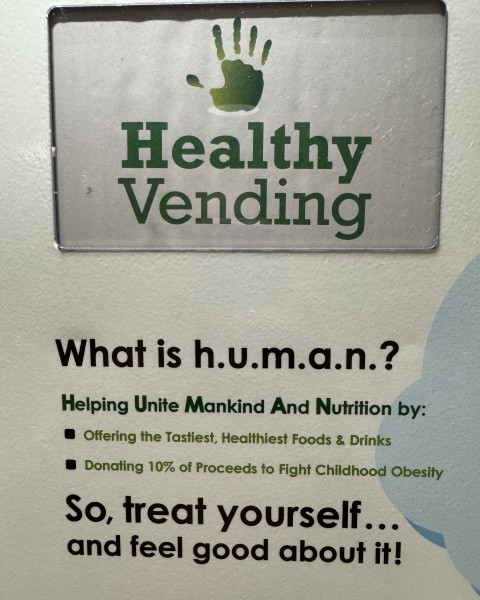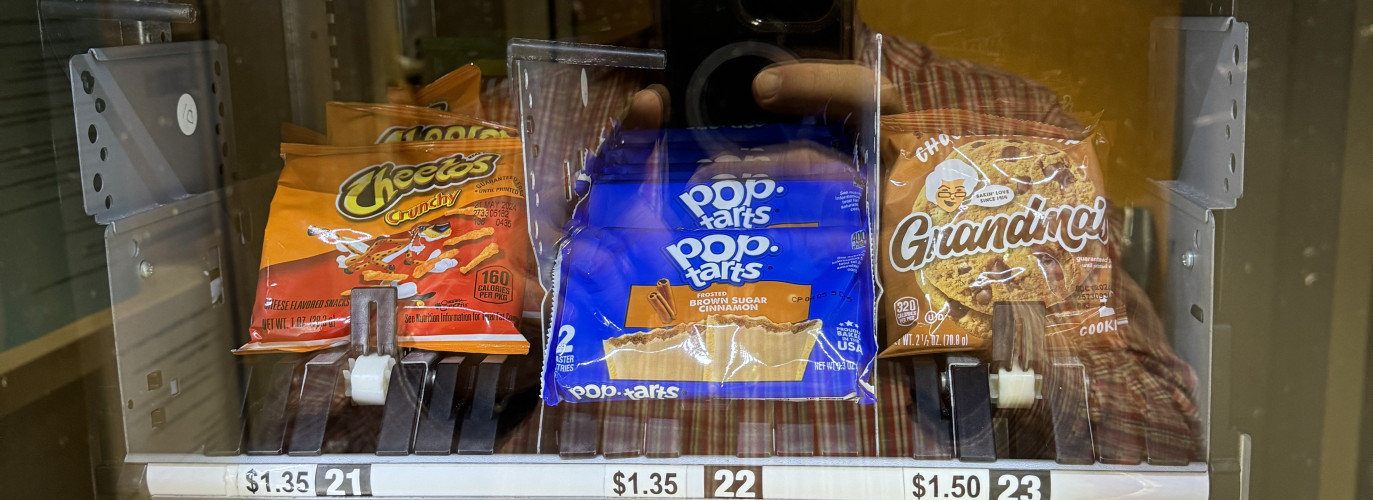
Sep 05, 2024

By Rick McNary
We stepped into the surgical waiting room at Ascension Via Christi St. Francis in Wichita to wait for our daughter during her surgery. The room was packed.
I noticed the “healthy vending” machine in the hallway and went to check it out. I read the sign that said it was sponsored by h.u.m.a.n., an acronym for Helping Unite Mankind And Nutrition, and saw this messaging:
• Offering the tastiest, healthiest foods and drinks
• Donating 10 percent of proceeds to fight childhood obesity
So, treat yourself…and feel good about it!

Then I looked at the items in the machine. Almost nothing would be considered “healthy food.” Doritos, Pop Tarts, Cheetos, Grandma’s Cookies, Ruffles, Bugles and Frito corn chips. I’m not sure what universe would consider those healthy foods, but it’s not mine. However, I know some children who would use this as evidence in justifying requests for junk food.
Initially, I found it humorous, but the more I thought about it, the more it disturbed me. Although it’s just one machine in a hospital, it also represents what is going on in the world of marketing food to consumers. Some of this happens to you in your grocery store.
Virtue signaling
The idea of virtue signaling means a company advertises they are creating positive social impact with part of your purchase. For example, Google has taken a lot of criticism for being “carbon neutral,” yet they want to be the biggest artificial intelligence (AI) provider in the world, which also means they are going to need massive server farms, therefore requiring outrageous amounts of electricity. They are virtue signaling.
So, h.u.m.a.n., is virtue signaling by trying to convince you that part of your purchase is going to help with obese children, yet any nutritionist will tell you the products in the machine contribute to obesity.
Fear-based marketing
Some companies have learned they can sell more products if they make people fearful of other products. For example, one of the more controversial topics is the issue of genetically modified organisms (GMOs) in which companies create the image that GMOs are responsible for all that’s wrong in the world. Therefore, companies have learned they can sell “non-GMO” products because they know people have been trained to be fearful of them.
For example, Hunt’s ketchup had a television advertisement a while back that panned a field of tomatoes and said, “No matter how far afield you look, you won’t find a single genetically modified tomato among our vines. No GMOs in sight.”
Of course, there were no GMOS in sight because there is no such thing as a GMO tomato. They don’t exist. But we should also remember that even if there were GMO tomatoes, they’d be safe – just as all commercially sold GMO products are.
False advertising
This might be the most egregious false advertising I have ever seen as h.u.m.a.n shared they are “offering the tastiest, healthiest foods and drinks.”
But for people who don’t know better and trust the branding and messaging on the outside of a machine (or a product), could begin to believe those products are healthy.
Caveat emptor, let the buyer beware
Some corporations will do whatever they can to make money and use whatever means necessary to entice you to buy their product. As you probably learned about caveat emptor, let the buyer beware, in an economics class in high school, the same is still true.
Learning about healthy food choices is easier now than it used to be. I would encourage you to follow a local Kansan with a national reach on Instagram, @brandibuzzard, who is a passionate advocate for the truth about food.
